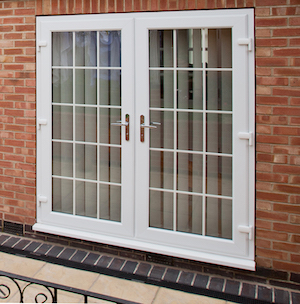
French Door Repair Parts
FollowOverview
-
Founded Date July 21, 1985
-
Sectors Accounting
-
Posted Jobs 0
-
Viewed 19
Company Description
You’ll Never Guess This French Door Damage’s Tricks
The Comprehensive Guide to French Door Damage: Causes, Solutions, and Prevention
French doors are a popular architectural option, celebrated for their beauty and capability to bring the charm of the outdoors into homes and organizations. Nevertheless, like any other part of a building, French doors can experience damage in time. This article provides an in-depth look at the causes of French door damage, the numerous kinds of damage that might occur, efficient repair methods, and preventive measures house owners can adopt. By understanding these aspects, homeowners can keep the visual and practical integrity of their French doors.
Types of French Door Damage
French door damage can manifest in different methods. Below are the most common types of damage that homeowners might experience:
| Type of Damage | Description |
|---|---|
| Wood Rot | Decay of wooden components due to extended direct exposure to wetness. |
| Deforming | Deformation of the door frame brought on by changes in temperature and humidity. |
| Cracks and Splinters | Surface area flaws on the door due to physical effect or aging. |
| Glass Damage | Damage or breaking of the glass panels, typically due to effect or weather condition. |
| Hardware Issues | Malfunctioning hinges, locks, or handles that impact door operation. |
Causes of French Door Damage
Understanding the reasons for French door damage is crucial to efficient maintenance and repair. Several aspects contribute to the wear and tear of these beautiful doors, including:
-
Exposure to Moisture: Consistent direct exposure to rain and humidity can lead to wood rot and mold development, particularly if correct sealing is refrained from doing.
-
Temperature Fluctuations: Extreme temperature modifications can trigger wood to expand and contract, leading to warping or splitting.
-
Inappropriate Installation: If a French door is not installed correctly, it might not function properly or align with the frame, causing gaps that can trigger more damage.
-
Impact Damage: Physical effects from furniture, family pets, or external sources can lead to cracks and splinters.
-
Poor Maintenance: Neglecting routine cleansing and maintenance jobs can exacerbate issues, leaving doors vulnerable to damage.
Fixing French Door Damage
When house owners find damage to their French doors, timely repairs are essential to avoid additional issues. Here are some recommended repair techniques based on the kind of damage:
1. Wood Rot Repair
- Identify Affected Areas: Determine the level of the wood rot by examining the door frame and other wooden parts.
- Get rid of Rot: Use a chisel or utility knife to remove decaying wood.
- Change with New Wood: Fill any gaps with wood filler or change totally decomposed sections with brand-new wood.
- Seal and Paint: Once repairs are made, ensure that the wood is sealed and painted to avoid future rot.
2. Contorting Fix
- Assess the Damage: Determine the level of warping.
- Humidity Control: Use a dehumidifier to minimize wetness in the area, which may help the wood go back to its initial shape.
- Enhance Structure: If warping is extreme, think about including more assistance or changing the door entirely.
3. Fractures and Splinter Repair
- Fill Cracks: Use wood putty to fill little cracks and sand down the surface for a smooth finish.
- Change Panels: If splinters are comprehensive, changing the whole panel may be required.
4. Glass Panel Repair
- Safety First: Wear protective gloves and glasses when managing damaged glass.
- Change Glass: If a panel is broken or broken, measure the measurements and replace the glass. Seek professional assistance if needed.
5. Hardware Fixes
- Inspect Hinges and Locks: Check for rust and wear.
- Oil and Tighten: Use lubricant on hinges and tighten up screws to improve performance or replace faulty hardware if needed.
Avoiding French Door Damage
Proactive maintenance is important to extend the life-span of French doors. Here are several preventive procedures homeowners must consider:
- Regular Inspections: Regularly examine doors for indications of wear or damage.
- Weatherproofing: Apply weatherstripping and caulk to seal spaces and secure versus wetness.
- Regular Cleaning: Keep the doors tidy to prevent dirt accumulation that can trigger scratches and degeneration.
- Periodic Painting and Sealing: Repaint or reseal doors every few years to safeguard versus the elements.
- Control Humidity: Use humidifiers/dehumidifiers in areas vulnerable to moisture fluctuation.
FAQs About French Door Damage
Q1: How can I inform if my French door is damaged?A1: Look for
indications of wood rot, warping, cracks in the wood or glass, and hardware issues. A misalignment in the door operation can also show damage. Q2: Can I repair French door damage myself?A2:
Many small repairs, such as filling fractures, lubricating hardware, and sealing wood, can be done individually. However, for comprehensive damage or glass replacement, think about working with a professional. Q3: How typically ought to I perform maintenance on my French doors?A3: It’s recommended to conduct a
comprehensive examination at least twice a year and perform routine maintenance as needed. Q4: What must I do if I have comprehensive damage?A4: In cases of serious damage, such as considerable wood rot or broken glass, look for the assistance of a professional contractor or professional for assessments and repairs. French doors are a spectacular addition to any home, supplying appeal together with functionality. Nevertheless, they are not immune to damage. Understanding the types of damage that can happen, acknowledging the causes, and executing
reliable repair methods can assist maintain the beauty and integrity of these doors. By practicing great maintenance and preventive care, homeowners can take pleasure in the sophistication of French doors for years to come.
